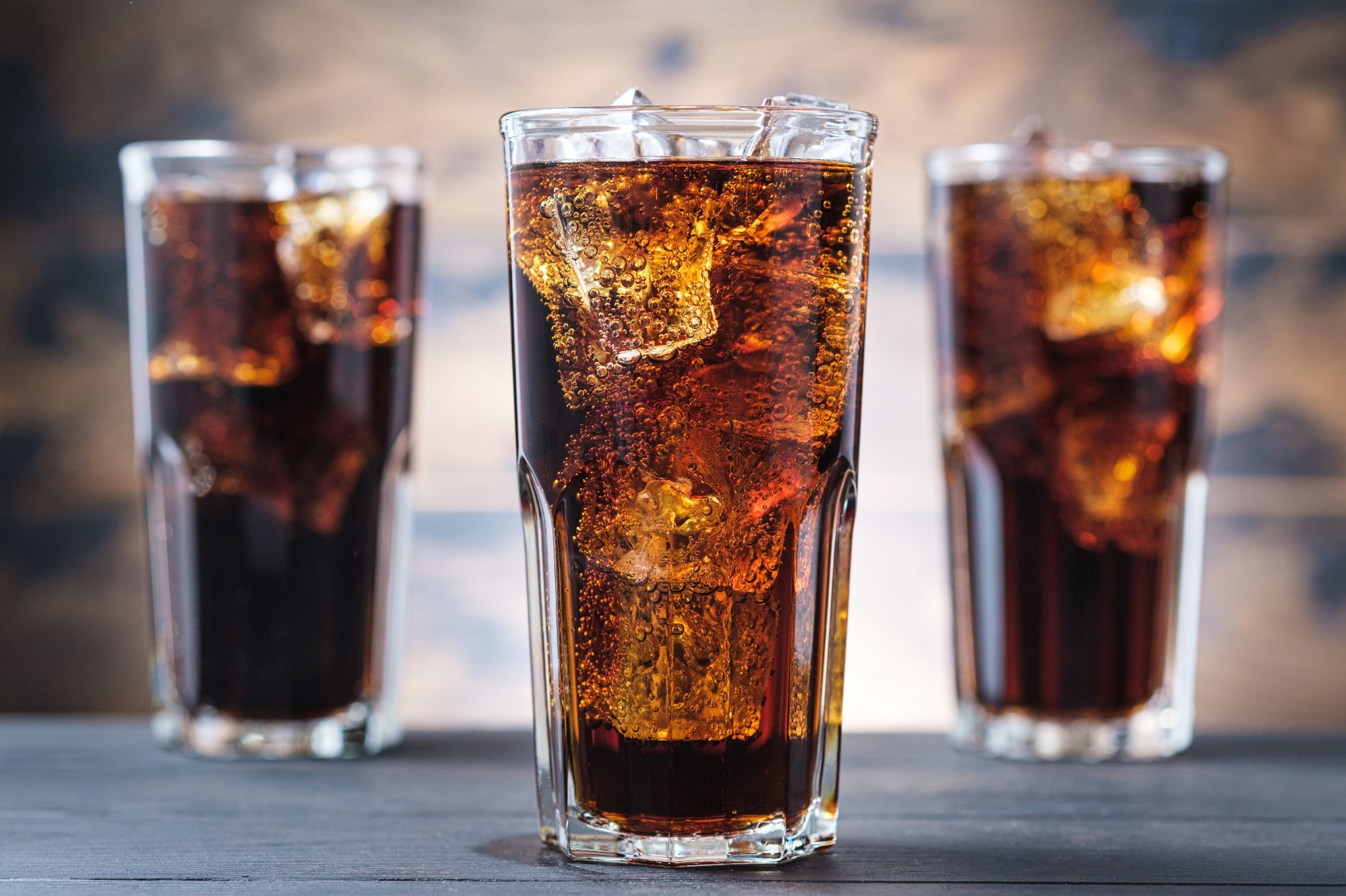A recent study posted to Preprints with The Lancet* evaluates the effectiveness of different warning label formats in reducing the consumption of sugar-sweetened beverages (SSBs).
 Study: Warning Labels for Sugar-Sweetened Beverages and Fruit Juice: Evaluation of 27 Different Labels on Health Effects, Sugar Content, Energy, and Exercise Equivalency. Image Credit: 4F.MEDIA / Shutterstock.com
Study: Warning Labels for Sugar-Sweetened Beverages and Fruit Juice: Evaluation of 27 Different Labels on Health Effects, Sugar Content, Energy, and Exercise Equivalency. Image Credit: 4F.MEDIA / Shutterstock.com

 *Important notice: Preprints with The Lancet publishes preliminary scientific reports that are not peer-reviewed and, therefore, should not be regarded as conclusive, guide clinical practice/health-related behavior, or treated as established information.
*Important notice: Preprints with The Lancet publishes preliminary scientific reports that are not peer-reviewed and, therefore, should not be regarded as conclusive, guide clinical practice/health-related behavior, or treated as established information.
The different types of warning labels on food and drinks
SSB consumption has contributed to increasing rates of chronic health conditions such as type 2 diabetes, periodontal disease, tooth decay, cardiovascular disease, and obesity. Warning labels represent a crucial strategy to reduce the consumption of beverages rich in free sugars. Evidence suggests this approach has effectively reduced consumer purchases of high-sugar products.
Experimental studies have demonstrated that mock-up warning labels draw attention and correspond to higher perceived risks and negative attitudes, thereby reducing the intended/actual consumption of SSBs. These studies used nutrient labels warning that the product is high in fat, sugar, energy, or salt, as well as health-effect warnings that the product may cause diabetes or obesity.
Including both nutrient and health-effect warning labels in a single study is scarce; however, study comparisons suggest that health-effect warnings may be more effective. Other messaging forms, such as exercise equivalents and energy information, have also been assessed.
The public response to different warning labels/messages for SSBs is a vital policy question as the move towards implementing such labels increases worldwide.
About the study
In the present study, researchers determine the relative effectiveness of different warning label formats in discouraging SSB overconsumption. Australians between 14 and 60 years of age were identified from a database, and those aged 18-60 were invited to participate. Guardians or parents of individuals between 14 and 17 were instructed to pass the questionnaire to their children.
Participants were stratified into core and secondary samples based on the regular consumption of soda and fruit juices, respectively. A questionnaire assessing randomly allocated warning labels on mock products was administered to each participant.
The format of warning labels was derived from the literature. Overall, 27 label variants across six formats, including health-graphic, health-text, sugar-pictogram, energy information, equivalent information, and sugar-text, were used.
Participants in the core sample viewed labels attached to Coca-Cola or lemon-flavored mineral water bottles. Secondary sample participants viewed labels on an orange juice bottle.
Data were collected between July and August 2019. Perceived effectiveness (PE) was calculated as four measures, including overall efficacy, persuasive potential, emotional response, and discouragement from drinking.
A general linear model was used to compare differences in overall effectiveness scores by drink type for the core sample. Similar models were used to compare scores for other measures for core and secondary samples. Post-hoc tests allowed the researchers to compare label sets pairwise with adjustments for multiple comparisons.
Study findings
The core and secondary samples comprised 2,572 and 1,048 participants, respectively.
Text and pictogram sugar sets and health-graphic labels generally had the highest average scores across overall effectiveness, discouragement, and emotional response measures. Sugar sets and exercise information labels had higher scores for the persuasive potential measure than graphic labels.
The linear models were statistically significant for both samples.
Most pairwise comparisons were also significant, with some exceptions. The sugar-text and -pictogram label versions were consistently ranked among the top 10 for each PE measure. Health-graphic labels were top-ranked for all PE measures except for persuasive potential.
The average overall effectiveness scores were highest for health-graphic labels on diabetes and tooth decay. Scores for discouragement from drinking or emotional responses followed similar trends; however, persuasive potential scores were different. Most individuals favored having warning labels on bottles and point-of-sale locations.
About 49% of the study participants supported taxing high-sugar drinks. Additionally, participants provided 6,852 comments on labels categorized as efficacy perceptions, perceived effect on consumption, comparison to tobacco labeling, perception of labeling as a positive or negative intervention, and recommendations.
Sugar sets primarily received positive comments, were perceived as effective, elicited emotional responses, and were likely to impact consumption. Other warning labels, such as health-graphic labels, received more criticism, which induced negative labeling perceptions.
Likewise, health-text and energy information labels were perceived as ineffective and unlikely to affect consumption. Exercise information labels received positive comments; however, they were found to be unlikely to influence consumption.
Conclusions
Sugar content-quantifying labels were most effective in discouraging consumers from SSB consumption. Graphic warnings were highly rated but received more criticism in comments about how they were unnecessary and extreme. Energy information labels were perceived as the least effective.
Overall, the study findings have important policy implications, as labels conveying factual and clear information can help consumers make informed decisions about their food and drink consumption.

 *Important notice: Preprints with The Lancet publishes preliminary scientific reports that are not peer-reviewed and, therefore, should not be regarded as conclusive, guide clinical practice/health-related behavior, or treated as established information.
*Important notice: Preprints with The Lancet publishes preliminary scientific reports that are not peer-reviewed and, therefore, should not be regarded as conclusive, guide clinical practice/health-related behavior, or treated as established information.
Journal reference:
- Preliminary scientific report.
Miller, C., Ettridge, K., Pettigrew, S., et al. (2023). Warning Labels for Sugar-Sweetened Beverages and Fruit Juice: Evaluation of 27 Different Labels on Health Effects, Sugar Content, Energy, and Exercise Equivalency. Preprints with the Lancet. doi:10.2139/ssrn.4495141